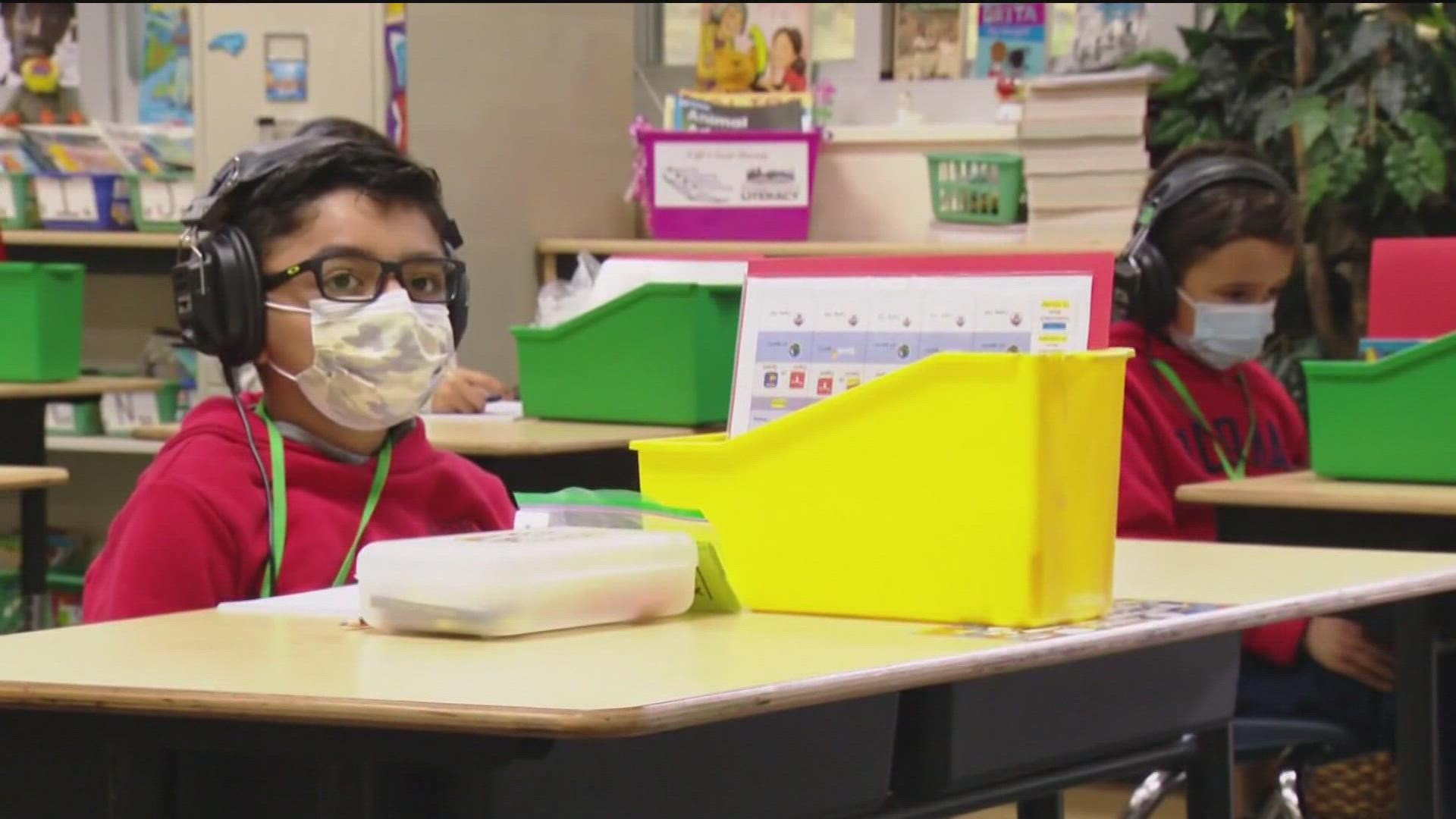SAN DIEGO — San Diego County will remain in the red, or substantial, tier of the state's four-tier COVID-19 reopening plan for at least another week, even as public health officials reported 278 new COVID-19 infections and 14 deaths from the illness.
According to the California Department of Public Health, San Diego County's state-calculated, adjusted case rate is 6.8 daily infections per 100,000 residents, up from 6.5 the previous week. The unadjusted case rate was 7.2, up from 6.9 last Tuesday.
The adjusted rate is due to San Diego County's high volume of tests, but still leaves the county on the precipice of the state's most restrictive tier -- purple.
The testing positivity percentage is 3%, below last week's 3.5%, and is in the third -- or orange -- tier.
To remain in the second tier of the four-tier COVID-19 reopening plan, the county must continue to have an adjusted case rate of less than 7.0 per 100,000 residents and a testing positivity percentage of less than 5%.
The new cases and deaths reported Tuesday raised the total for the region to 51,024 cases and 840 deaths.
Eight women and six men died between Oct. 3 and Sunday. Their ages ranged from the early 50s to early 100s. All but one had underlying medical conditions.
Of the 10,078 tests reported Tuesday, 3% returned positive, keeping the 14-day rolling average percentage of positive cases at 2.9%. The seven-day daily average of tests was 10,608.
Of the total number of cases in the county, 3,702 -- or 7.3% -- have required hospitalization and 857 -- or 1.7% of all cases -- had to be admitted to an intensive care unit.
Six new community outbreaks were reported Tuesday -- three in restaurant/bar settings, two in private residences and one in a kindergarten through 12th grade school.
In the past seven days, 52 community outbreaks were confirmed, well above the trigger of seven or more in a week's time. A community setting outbreak is defined as three or more COVID-19 cases in a setting and in people of different households over the past 14 days.
Another metric the state released Tuesday is the health equity metric, which finds the positivity rate of the county's least healthy quartile. San Diego County's health equity is 5.7%, slightly less than double the county's positive testing average.
The metric will be used to determine how quickly a county may advance through the reopening plan, San Diego Public Health Officer Dr. Wilma Wooten said last Wednesday.
A community can only be as well as its unhealthiest quartile, she said, and while counties with a large disparity between the least and most sick members of a community will not be punished for the disparity by sliding back into more restrictive tiers, such a disparity will stop counties from advancing to less-restrictive tiers.
To advance to the orange tier, the county would need to report a metric of less than 5.3%.
According to the state guidelines, the health equity metric will measure socially determined health circumstances, such as a community's transportation, housing, access to health care and testing, access to healthy food and parks.
Neighborhoods are grouped and scored by census tracts on the Healthy Places Index, healthyplacesindex.org. Some of the unhealthiest neighborhoods include Logan Heights, Valencia Park, downtown El Cajon and National City.
The California Department of Public Health will update the county's data next Tuesday.
Participants in a gathering need to stay at least six feet apart from non-household members and wear face coverings. Gatherings should be kept to two hours or less, the new guidelines state.
Over the weekend, the county allowed private gatherings of up to three households, based on the state's new guidance issued Friday.
The gatherings must take place outdoors. If at someone's home, guests may go inside to use the bathroom.




